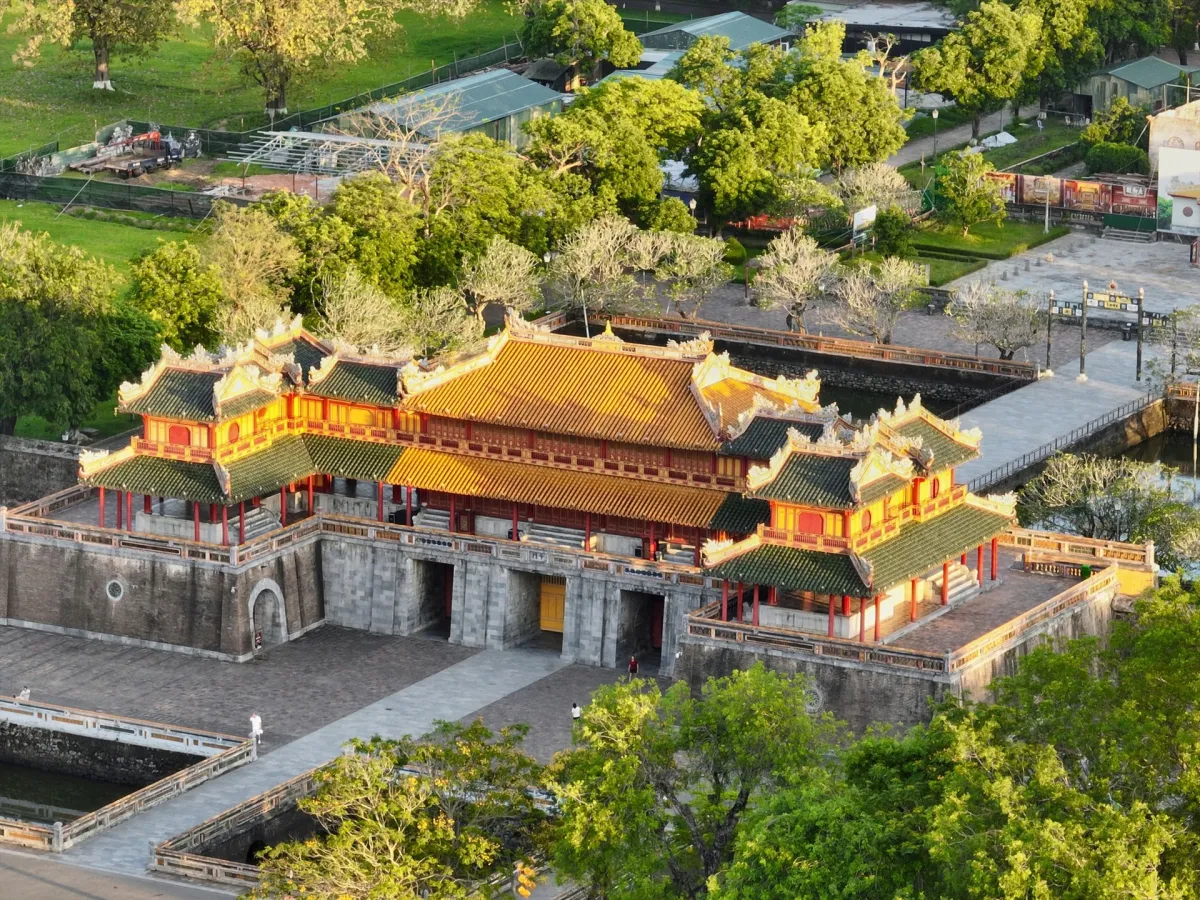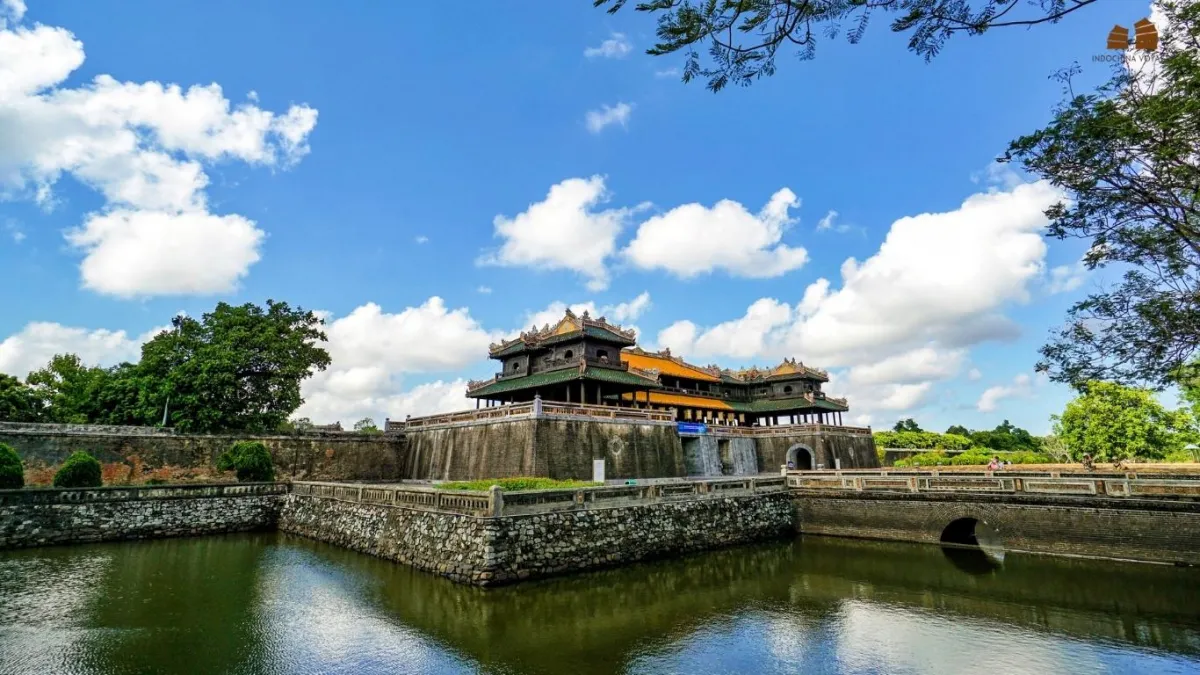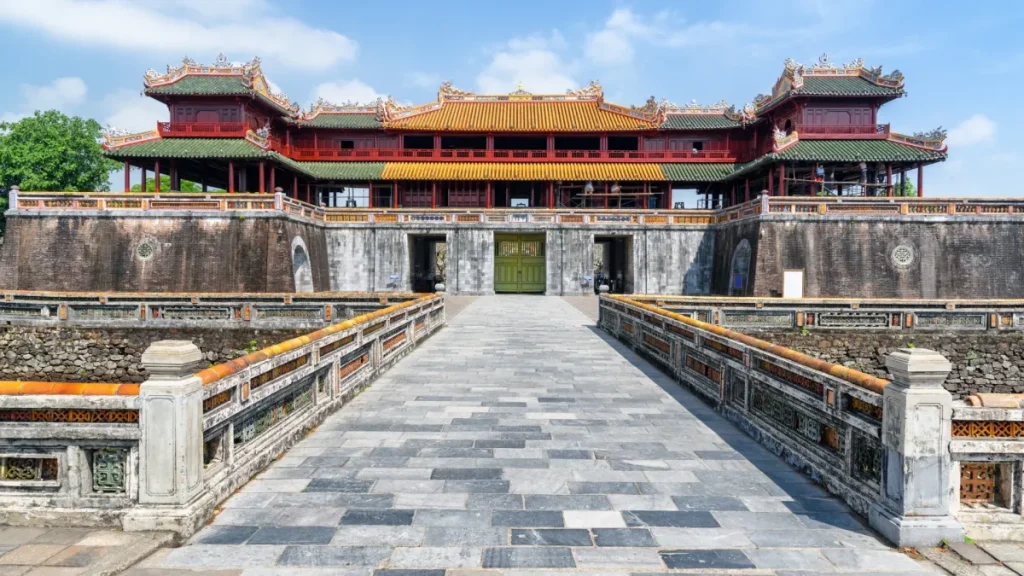Unveiling the Majesty of Hue Citadel
Hue, the former imperial capital of Vietnam during the Nguyen Dynasty (1802-1945), is a city steeped in history and culture. At its heart lies the magnificent Hue Citadel, a UNESCO World Heritage Site that captures Vietnam's royal past. The Citadel, with its imposing walls, intricate gates, and opulent palaces, stands as a testament to the power and grandeur of the Nguyen emperors.
A Journey Through Time: Exploring Hue Citadel's History
Construction of the Hue Citadel began in 1804 under Emperor Gia Long, the founder of the Nguyen Dynasty. Inspired by the Forbidden City in Beijing, the Citadel was designed as a walled fortress and royal residence, symbolizing the emperor's authority and the nation's strength. Over the following decades, successive emperors expanded and embellished the Citadel, adding palaces, temples, gardens, and defensive structures.
The Citadel's Architectural Marvels: A Fusion of Styles
The Hue Citadel uniquely blends Vietnamese, Chinese, and European architectural influences. The Citadel's walls, constructed with brick and later reinforced with earth, form a massive rectangle encompassing an area of over five square kilometers. Ten imposing gates, each with historical significance, provide access to the Citadel's inner sanctums.
The Imperial Enclosure: Heart of the Citadel
Within the Citadel walls lies the Imperial Enclosure, the most sacred and restricted area reserved for the emperor, his family, and high-ranking officials. This inner city within a city is further divided into various zones, each with its specific purpose and architectural style.
The Thai Hoa Palace: Throne Room and Symbol of Power
The Thai Hoa Palace, also known as the Palace of Supreme Harmony, served as the emperor's throne room and the venue for important ceremonies and state occasions. Its grand design, featuring intricate woodwork, gilded decorations, and vibrant red lacquer, reflects the luxury of the Nguyen court.
Forbidden Purple City: The Emperor's Private Realm
The Forbidden Purple City, located within the Imperial Enclosure, was the emperor's private residence and a place of utmost seclusion. Only the emperor, his consorts, and eunuchs were allowed within its walls. Though largely destroyed during the Vietnam War, remnants of the Forbidden Purple City offer a glimpse into the emperor's daily life and the intricate workings of the imperial court.
Delving Deeper into Vietnam Historical Sites: Beyond the Citadel
Hue's historical significance extends beyond the Citadel walls. The city has numerous historical sites in Vietnam, including magnificent royal tombs, ancient pagodas, and charming garden houses.
The Royal Tombs: Architectural Masterpieces and Spiritual Sanctuaries
The Nguyen emperors, known for their reverence for their ancestors, constructed elaborate tombs on the outskirts of Hue. Each tomb is a unique architectural masterpiece, reflecting the emperor's personality and reign.
Tomb of Tu Duc: A Harmony of Nature and Architecture
The Tomb of Tu Duc, one of the most visited royal tombs, is a sprawling complex of pavilions, temples, and gardens amidst a serene pine forest. Tu Duc, known for his love of poetry and the arts, designed his tomb as a place of contemplation and retreat, even before his death.
Tomb of Khai Dinh: A Fusion of East and West
The Tomb of Khai Dinh, built in the early 20th century, starkly contrasts the traditional Vietnamese style of the other tombs. Influenced by European architecture, Khai Dinh incorporated elements of Art Deco and Romanesque styles into his tomb's design, creating a unique fusion of East and West.
You may need or be interested in
Pagodas and Temples: Spiritual Centers of Hue
Hue also has numerous pagodas and temples, reflecting the city's rich Buddhist heritage. These spiritual centers offer a glimpse into the religious beliefs and practices of the Vietnamese people.
Thien Mu Pagoda: Symbol of Hue's Resilience

The Thien Mu Pagoda, with its iconic seven-story octagonal tower, stands majestically on the banks of the Perfume River. This ancient pagoda has witnessed centuries of history and played a significant role in Hue's religious and cultural life.
Hon Chen Temple: Dedicated to the Goddess of the Sea
The Hon Chen Temple, located on a small island in the Perfume River, is dedicated to the Goddess of the Sea, a revered deity in Vietnamese folklore. The temple's serene setting and colorful decorations make it a popular destination for pilgrims and tourists.
Exploring Hue City: A Cultural Tapestry

Exploring Hue City offers a rich and immersive cultural experience. From strolling along the picturesque Perfume River to savoring the city's unique cuisine, Hue delights visitors with its charm and authenticity.
The Perfume River: Lifeline of Hue
The Perfume River, flowing gracefully through the heart of Hue, is an integral part of the city's identity. A boat trip along the river is a must-do activity, offering breathtaking views of the Citadel, royal tombs, and pagodas that line its banks.
Hue Cuisine: A Culinary Delight
Hue is renowned for its distinctive cuisine, characterized by its delicate flavors, intricate presentation, and use of fresh local ingredients. From the iconic Bun Bo Hue (spicy beef noodle soup) to the imperial-inspired dishes served in traditional garden houses, Hue's culinary scene tantalizes the taste buds.
Preserving Hue's Legacy for Future Generations
Hue's historical sites and cultural heritage are invaluable treasures that must be preserved for future generations. Efforts are underway to restore and protect the Citadel, royal tombs, and other historical monuments, ensuring that Hue's rich past continues to inspire and educate visitors worldwide.
A Journey Back in Time
A visit to Hue is a journey back in time, a captivating glimpse into Vietnam's royal past and rich cultural heritage. From the grandeur of the Hue Citadel to the serenity of the royal tombs and the charm of the Perfume River, Hue captivates visitors with its beauty, history, and authenticity. Exploring Hue city and its surrounding Vietnam historical sites is an unforgettable experience that leaves a lasting impression on all who venture to this enchanting destination.
